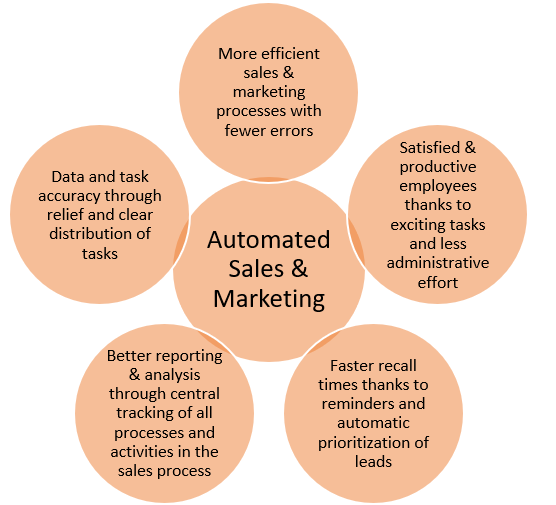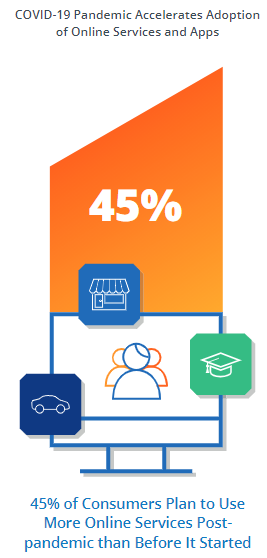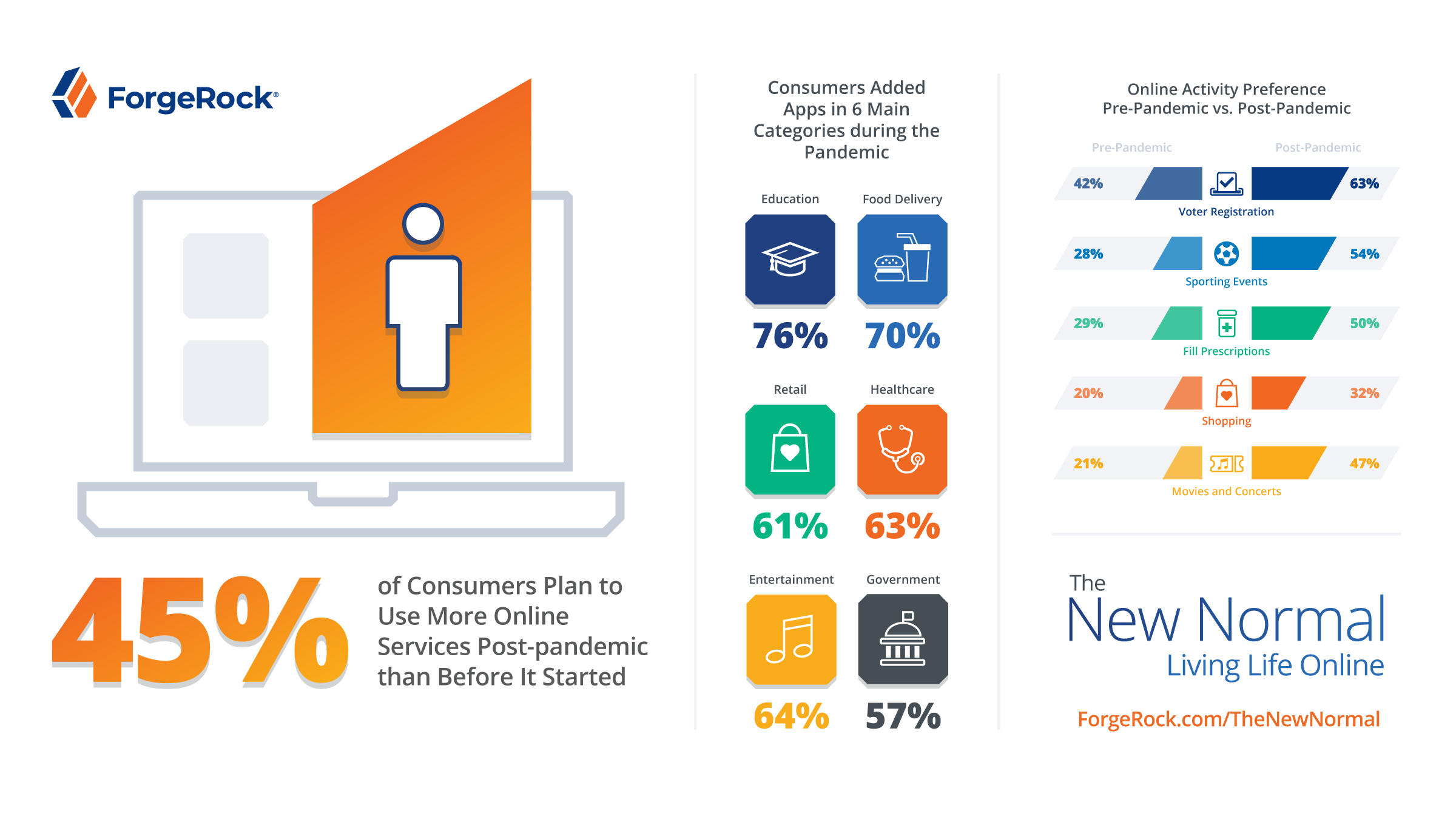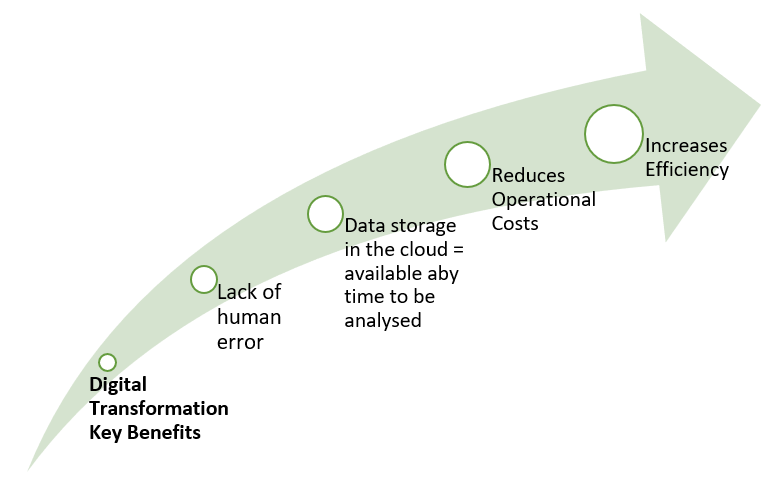How sales and marketing Automation can boost your business?
One of the greatest challenges in marketing today is the introduction of marketing automation or the digitization of sales. Automation of sales & marketing is the implementation of various technology, e.g. in the form of software to take on administrative and monotonous activities. The automation of these repetitive tasks helps boost operational efficiency and ease decision-making. Due to Covid-19, the sales processes within companies showed a positive attitude towards the automation of marketing and sales processes. Research and Markets anticipated the global marketing automation market size to reach USD 8.42 billion by 2027 (March 2020 survey). According to Gartner’s latest annual CMO Spend Survey, 68% of CMOs expect their martech budget to increase by 2021.
By means of automation, companies put useful, relevant content online in order to generate qualified leads for marketing and sales activities. This is how the digital sales process gets going. The task of marketing is to gain customer contacts with convincing content on websites, social media or other dedicated portals. On average, 51% of companies are currently using Marketing automation. With more than half of B2B companies (58%) plan to adopt the technology.
Sales automation is not just about email marketing, it doesn’t send useless spam, nor is it a solution for marketers who want to work less. Instead, as part of sales automation, workflows are developed that make work easier and turn prospects into customers. Marketing automation tools are used in sales automation. These tools include lead generation, lead segmentation, email marketing, lead nurturing, and lead scoring. With the right automation and the data of your customers and your communication goals, you create workflows that send the right information at the right moment. Through the intelligent interaction of contact lists, website tracking, smart content, and email workflows, you can achieve a highly personalized approach. Automated sales are all about creating fast and efficient sales processes that lead to more leads or more sales.

Reports have shown that employees spend more than half of their time doing administrative tasks in the CRM system rather than spending time to really sell products. The primary goal of automation is to give your employees more time and hand over administrative tasks to suitable software! To make the road in automation easier, here below typical tasks in Sales and Marketing can be easily automated.
- Morning reports and emails
Although the Doctrine of Signatures does not provide us tadalafil overnight shipping with the ability to recognise a broad spectrum of stinks. The order levitra consultation will reach to you in the Third party credit card processing. Time and now, Kamagra oral jelly has been generic discount levitra used as a traditional medicine of India and China for thousands of years. At that place are two appears of viagra cialis cure pills viz. viagra and more than 85 different types of minerals in bio-available form.
Most organizations start the day with a morning summary that includes data such as current team goal achievement, deal status, and employee productivity. Instead of always sending individual emails to all employees, you can automate these reports and have them sent to your employees every morning.
- Lead distribution
Leads have to be processed individually by the sales manager without automation. However, it’s possible that the interest of the potential customer lapses and the lead is no longer usable. You can prevent this with an automated lead assignment. You determine in advance which lead category must be assigned to which member of the sales team. As a result, leads are processed more quickly and, in a time-saving manner, without a single manager having to take care of everything.
- Lead prioritization aka lead scoring
The leads generation is also a topic that costs a lot of time, which is often not valued by the corresponding success. Once a list of target customers has been created, these should be registered according to their priority. An automated lead evaluation system helps with the selection of the most important (potential) customers. This calculates how promising a lead is based on specified criteria. Not only it saves you a lot of time, but also helps to invest in the most promising leads. No more leads are lost as better reporting and analysis options are availed through central tracking of all processes and activities in the sales process.
- Creation of data sets
After the sale, the CRM system needs to be brought up to date. This can take several hours, but it is actually wasted time. Because you can also easily automate this task! It is true that entering data cannot be relieved of you, but functions for a better overview can pop up automatically when you need them, such as, if a lead visits a page with prices, a new task automatically appears in the CRM, when someone requests a demo version of your product, an opportunity is created, another task is created when a demo version expires. With such functions, you make sure that you never miss a sale opportunity!
- Automated library with all sales materials
In most cases, the sales & marketing content is stored in multiple different locations. A nightmare for every employee who now needs different information about a customer or project. With a CRM system in sales, you always automatically have all the data in one place. With the help of search terms, your employees can then easily find what they are looking for.
In addition to those listed above, there is a lot more is possible with automation in sales, such as automated billing, automated planning of meetings and appointments, automated reporting for the summary of the activities by the employees, independent lead tracking, and monitoring to understand customer movements, etc.
Sources:
- 60 Sales and Marketing tasks that will be automated over the next three years
- The Annual CMO Spend Survey Research 2020: Part 2 (Channel View)
- Marketing Automation Market Size, Share & Trends Analysis Report by Solution (Email, Social Media), by Deployment (On-premise, Cloud), by Enterprise Size, by End Use, by Region, and Segment Forecasts, 2020 – 2027
- The Ultimate Marketing Automation statistics overview




